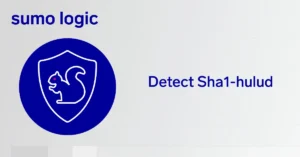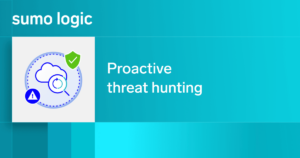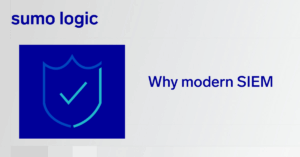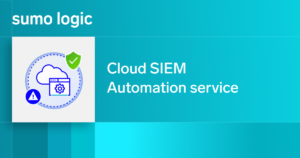
When we talk about emerging technologies and digitization, we often forget that while innovators work to bring the best security tools to market, malicious actors are concurrently working to identify loopholes and vulnerabilities in these new systems. Gone are the days when cyber attacks were a rare occasion; now, they happen almost daily.
As attacks become more sophisticated and practically inevitable, CISOs are now preparing for a “when it happens” rather than an “if it happens” scenario. Most organizations are investing in a security operations center (SOC) to help identify, manage, and contain security incidents to reduce the impact on the organization when an attack occurs.
And just like standups evolved from being a developer-only ritual to a practice embraced across teams for better alignment, SOCs are becoming central hubs that bring people and processes together to reduce the impact if an attack occurs.
The evolution of enterprise SOCs and SIEM technology
Enterprise SOCs are becoming a crucial part of most organizations’ management departments due to increased digitization and interconnectivity. SOCs play a major role in monitoring, managing, and responding to security alerts within a company’s daily operations.
As cyberattacks become more sophisticated, the demands on SOCs have changed with rising data volumes, complex security tool ecosystems, and increased data sources and attack vectors. To stay efficient, SOCs must go beyond log management and data analytics to embrace automation, leveraging big data and AI for intelligent decision support, and increasing visibility into their product through observability.
Although there is an increasing need for real-time security for SOCs, most companies are still struggling with inefficiencies. Some are restrained by legacy security information and event management (SIEM) tools that cannot provide meaningful insights or handle cloud services. As a result, many turn to having a SIEM just to monitor their cloud environment, and another for everything else, which causes a huge blind spot. Most SOCs face different operational and technical challenges that need to be addressed through the use of a comprehensive, modern SIEM tool that can increase visibility into their daily security operations.
Sumo Logic Cloud SIEM provides security analysts with enhanced visibility across the enterprise, helping you understand an attack’s impact and context. With streamlined workflows and automatically triaged alerts, security analysts can maximize their efficiency and focus.
Common SOC operational challenges
As technology advances in cloud migration, digital transformation, IoT technologies, and cybersecurity, most SOCs struggle to keep up with emerging technologies. This causes a shortage in SOC teams and prevents them from seeing the full security posture of their organizational operations. Here are the four challenges SOCs face daily.
1. Alert fatigue
According to Sumo Logic’s 2025 Security Operations Insights report, over 70% of security leaders struggle with alert fatigue and false positives, with many receiving over 10,000 security alerts daily.
For many SOC analysts, that means hours combing through logs and reviewing security event notifications, many of which lead nowhere. Adding to the challenge, too many point solutions are being developed that promise prevention but do little to improve day-to-day efficiency. Solving hundreds of security incidents, most of which could be recurring and of low importance, is cumbersome, demotivating, and stressful.
According to the report, alert fatigue is pushing buyers toward platforms that behave like AI co-analysts, not mere log collectors. Security teams want a security solution with better threat detection, pattern recognition, and anomaly detection without overwhelming security teams.
2. The “cry wolf” effect
It’s not only the multitude of alerts that are challenging for SOCs, but also the fact that most of these alerts are false positives, which desensitizes SOC analysts and creates stress.
Many companies spend the majority of their time juggling through false positives, rather than solving actual alerts. Security analysts should recognize this tendency and rapidly evaluate whether an alarm is true or false. Then, by triaging the alert, they can escalate it to the proper stakeholders. This is what most organizations struggle with today—differentiating between real and false alerts, then attending to the right ones.
3. Staff shortage
Currently, there’s a staff, skill, and knowledge shortage. Staff shortages are the biggest hurdle in the cybersecurity industry because there just isn’t enough skilled talent. And with cloud migration, it’s even harder to find candidates with these specific skills.
When organizations can’t hire fast enough to fill security skill gaps, the burden falls on existing SOC staff. Without the expertise to fully leverage monitoring and management tools, teams respond more slowly and less effectively. If security solutions aren’t intuitive or adaptive, even skilled analysts are held back.
Knowledge shortages go hand in hand with skill shortages. Too little knowledge increases the likelihood that employees will fail to recognize problems, leading to a failure to respond to real cyberattacks.
4. Lack of set benchmarks for SOC KPIs
The threat landscape is constantly evolving, which makes it critical for your security team to implement SOC KPIs to improve its operations over time. The challenge here is that these are highly subjective, and there are no set benchmarks for SOC KPIs.
While every organization’s priorities differ, here are a few core KPIs to start with to provide the clearest view of SOC maturity and business alignment:
- Detection and response: MTTD, MTTR, dwell time, and detection coverage.
- Alert quality: True vs. false positive rate, signal-to-noise ratio, and analyst utilization rate.
- Workflow and automation: Automation rates and case closure rates.
- Business alignment: Cost per incident to tie SOC efficiency to ROI.
Using Sumo Logic Cloud SIEM for daily standups
Across our customer base, Sumo Logic Cloud SIEM processes over 1.1 billion events generated from enterprise operations daily, filters them down to around 10,000 alerts at the disposition level, where contextual validation, false-positive tuning, and escalation occur.
It then applies basic rules and advanced correlation techniques to reduce the alerts to around ten actionable alerts. While this reduces alert volume, teams still need detailed incident reports to measure efficiency and track KPIs. Cloud SIEM solves this challenge with SOC dashboards that simplify reporting and visibility.
SOC standup overview
Sumo Logic provides a single pane of glass that captures all important threat correlations, trends, and alert breakdowns into one view. Every entry provides visibility into an organizational-level threat detection use case and offers:
- Honeycomb view: Consolidates the correlations, the alert view, and the corresponding alert breakdown per day.
- Trend analysis: Track all alerts in hourly windows and flag them with color-coded baselines.
Before you decide to build a SOC dashboard like this, you need to evaluate your security infrastructure, the source and nature of your logic, and which features will help your organization meet its particular security goals.
Sumo Logic dashboard breakdown

Not only does Sumo Logic provide a 40,000-foot view of all correlations, but it also gives a breakdown by alert summary, incident summary, and SOC KPIs.
These are divided into separate panes for easy readability and consumption. All of the dashboards are powered by correlations generated by our SIEM software, and they also account for the responsible analyst as well as the responses for tracking KPIs.
SOC dashboard: Alert summary

This part of the SIEM dashboard monitors alerts and provides a summarized version of alerts and behaviors. It displays alert summaries in four parts: alert trends and behaviors, repeat offenders, MITRE ATT&CK mapping, and geo-location information.
SOC dashboard: Incident summary

This displays the total Insights of both triaged and prioritized alerts for investigation, including system-generated Insights (which are adapted from signal clustering algorithms by default), user-generated Insights (which are manually escalated from alerts by an analyst), and Insight details (which consist of a summary of Insights generated in Cloud SIEM).
SOC dashboard: SOC KPIs

This pane tracks the mean time to detect, mean time to respond, and mean time to remediate Insight closures. It monitors how each analyst is closing Insights and the type of resolution needed. It also counts the resolution type in a way that makes benign alerts, actual incidents, and false positives visible across the dashboard.
Final note
At Sumo Logic, we use Cloud SIEM dashboards in our own daily standups, which has significantly improved our efficiency, collaboration, and focus on the metrics that matter.
See Cloud SIEM in action. Get a demo.




